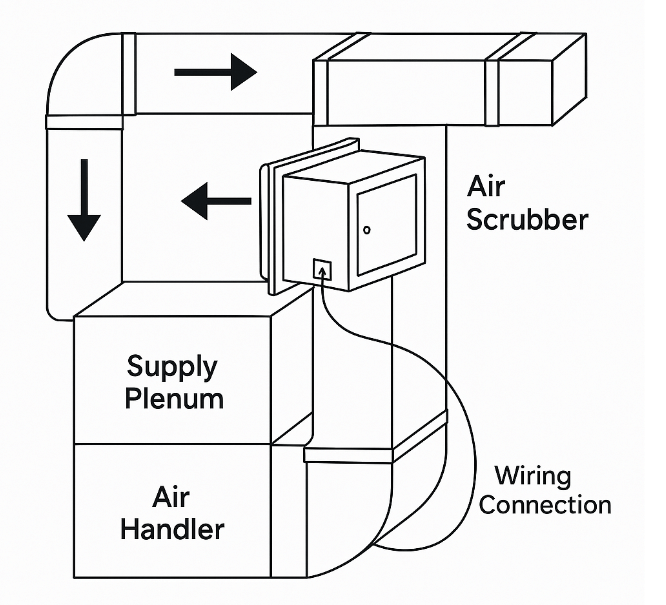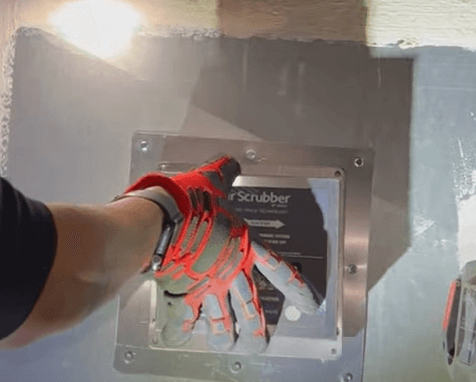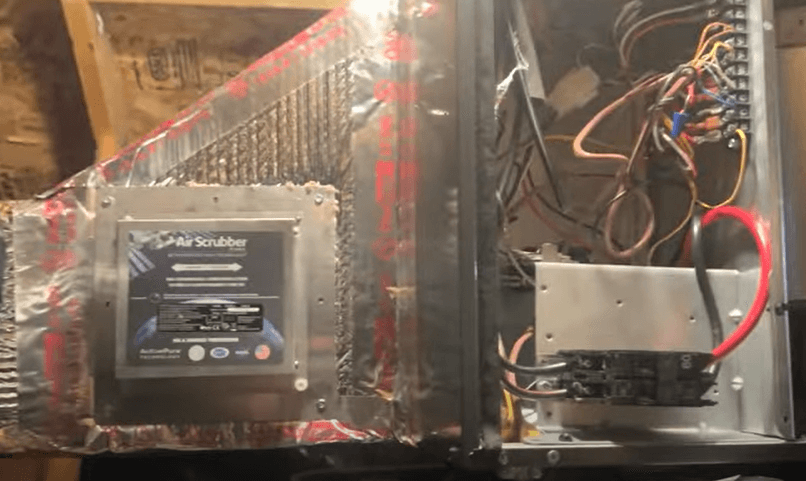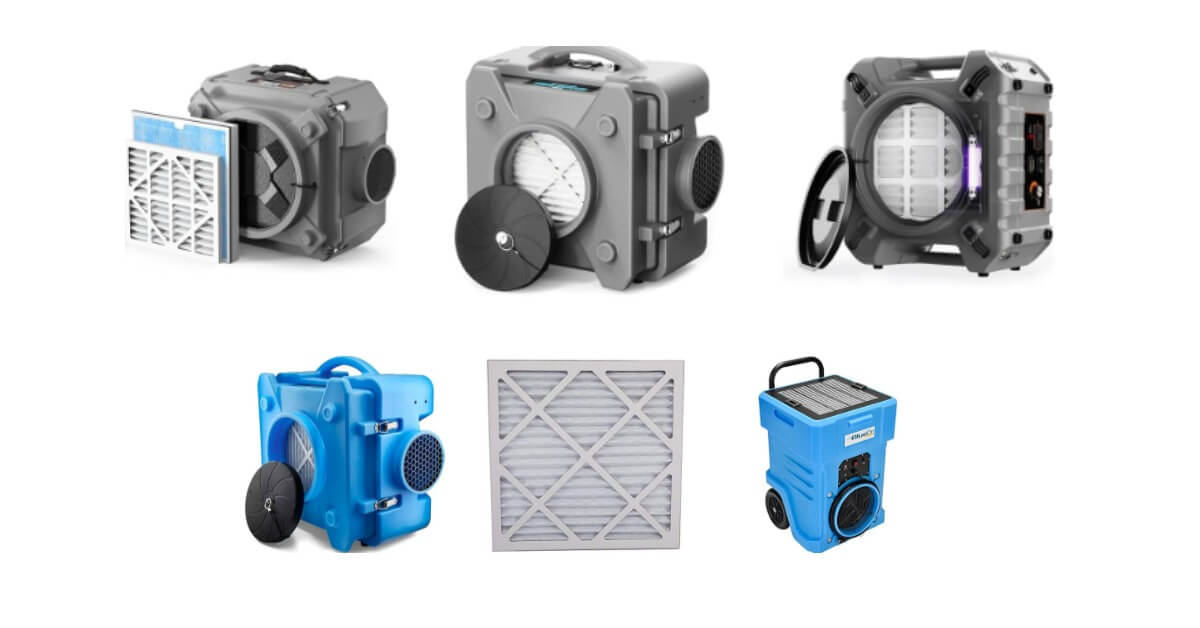Air Scrubber Installation is an essential process for anyone looking to significantly improve the air quality inside their home or business. Installing an air scrubber ensures that dust, allergens, bacteria, and even viruses are actively removed from the air you breathe. Whether you are upgrading your existing HVAC system or setting up a new air purification system, understanding the basics of air scrubber installation helps you maximize efficiency and comfort.
Choosing the right air scrubber for your space involves several factors like size, compatibility with your HVAC system, and your specific air quality needs. It’s important to select a model that effectively targets the contaminants most common in your environment. Proper installation not only improves the unit’s performance but also extends its life, ensuring that you get the full value from your investment over time.
A professional installation is often recommended to guarantee that the air scrubber is securely and correctly integrated into your ventilation system. However, for those comfortable with DIY projects, following a detailed installation manual can make the process manageable. With the right approach, air scrubber installation can transform your indoor environment, offering cleaner, fresher air and promoting a healthier lifestyle for you and your family.
Key Takeaways
| Step | Details |
|---|---|
| Choose the Right Scrubber | Match the unit to your home size and health needs. |
| Prep the Space | Clean the area and turn off the HVAC system. |
| Install Carefully | Position near return ducts, mount securely, and seal completely. |
| Test the System | Ensure airflow, UV function, and noise levels are correct. |
| Maintain Regularly | Change filters and monitor the system monthly. |
Understanding Air Scrubbers
What Are Air Scrubbers?
Imagine your home’s air getting a spa day—that’s basically what an air scrubber does.
An air scrubber is a high-tech device installed directly into your HVAC system, designed to remove contaminants like dust, mold spores, odors, and bacteria from the air. Unlike a simple filter, it doesn’t just trap particles; it neutralizes and destroys them through processes like UV light oxidation.
In short? It makes your indoor air not just clean, but healthier.
Residential vs. Commercial Air Scrubbers
Here’s where it gets interesting: not all air scrubbers are created equal.
- Residential Air Scrubbers
These are compact, user-friendly devices designed to handle the air quality of homes. Perfect for families, they balance power with energy efficiency and are quiet enough not to disturb your Netflix binges. - Commercial Air Scrubbers
Now, these bad boys are the big players. Industrial settings like warehouses, hospitals, or construction sites use them to manage serious air pollution challenges.
Choosing between them? If it’s for your cozy living space, a residential model is your best friend.

Benefits of Using a Residential Air Scrubber
You’re probably wondering, “Is it really worth it?” Let’s count the ways:
- Healthier Air: No more sniffles or mysterious headaches.
- Odor Elimination: Goodbye lingering pet, smoke, or cooking smells.
- Less Dust: Meaning fewer battles with your feather duster.
- Mold Prevention: A true hero if you live in a humid environment.
And honestly? It just feels good knowing you’re breathing in air that cares about you.
Preparing for Air Scrubber Installation
Choosing the Right Air Scrubber for Your Home
First things first—don’t just grab the first air scrubber you see online.
Think about:
- Home Size: Bigger spaces need more powerful units.
- Health Needs: Asthma sufferers or allergy-prone folks might need higher-grade filters.
- Budget: Trust me, there’s a sweet spot between affordability and efficiency.
- Warranty: Always check the fine print. You want protection in case anything goes sideways.
Pro Tip: Consult your HVAC technician. They’ll know exactly what fits your setup.
Gathering Necessary Tools and Materials
Before the air scrubber installation party begins, stock up:
- Air Scrubber Unit
- Installation Guide
- Drill or Screwdriver
- Mounting Brackets
- Duct Tape or Sealant
- Gloves and Safety Glasses
Trust me, it’s way less stressful having everything ready to roll.
Preparing Your Space
Clear the battlefield, my friend!
Here’s your prep checklist:
- Identify the Spot: Usually near your HVAC’s air return.
- Declutter the Area: Make sure there’s enough space for both the installer and your new device.
- Turn Off Power: Safety first. Always!
Doing this saves the installer’s time—and your nerves.

Step-by-Step Air Scrubber Installation Process
Position the Air Scrubber
Location, location, location!
Position the unit where it can clean the most air efficiently, usually at the return air duct.
This spot ensures your scrubber captures as many airborne nasties as possible before they recirculate.
Mount the Air Scrubber
Once the perfect spot is picked, it’s time to mount.
Using brackets provided, attach the scrubber securely to your ductwork. No wobbling allowed—it’s a team player, not a freestyler.
Mounting ensures the scrubber stays in place and works efficiently without rattling noises or air leaks.
Connect the Unit to Ductwork
Next, integrate your air scrubber with the ductwork.
Installers typically:
- Drill holes to attach brackets.
- Use screws to anchor it tightly.
- Connect air intake and output correctly.
Think of it like plugging in your new Xbox—secure connections mean smooth operation.

Seal and Secure the Installation
Tiny leaks = big problems.
After mounting, the technician seals all gaps with duct tape or an appropriate sealant.
This guarantees that every ounce of air flows through the scrubber, not around it.
System Testing and Troubleshooting
Installation complete? Not quite yet!
- Power the system on.
- Monitor airflow and ensure no buzzing or clanking.
- Check if UV lights or purification mechanisms are functioning.
If anything seems off, adjustments are made immediately. You don’t leave a race car without checking the engine, right?
Air scrubber installation cost
The cost to install an air scrubber can vary depending on several factors, including the type of system, brand, complexity of your HVAC setup, and labor rates in your area. On average, professional installation can range between $500 to $2,500.
If you already have an HVAC system compatible with the air scrubber, the cost could be on the lower side. However, if modifications are needed, the cost may increase.
Some breakdowns include:
- Basic air scrubber unit: $400 – $1,200
- Professional labor charges: $100 – $400
- Additional parts or adapters (if required): $50 – $300
Keep in mind that investing in a good air scrubber can significantly improve indoor air quality, potentially reducing healthcare costs and HVAC maintenance in the long run.
Air Scrubber installation Manual
An air scrubber installation manual typically provides a step-by-step guide to safely and correctly set up the device. It usually covers:
- Safety precautions before starting
- Tools and materials needed (e.g., screwdriver, drill, mounting brackets)
- Placement instructions, typically installing the air scrubber inside the HVAC system, near the air handler or ductwork
- Wiring guidelines to correctly connect the power supply (most units need 24V or 120V connections)
- Startup procedures to test if the air scrubber is functioning properly
- Maintenance tips to keep the system running efficiently
If you’re planning to do a DIY installation, always refer to the specific manual that comes with your model, because different brands (like Aerus, Air Oasis, etc.) have slight variations in installation steps.
If unsure, hiring a professional can ensure it’s installed safely and correctly.
Air scrubber installation diagram
An air scrubber installation diagram visually shows where and how the device should be integrated into your existing HVAC system. Typically, the diagram will illustrate:
- The location inside the supply plenum (just after the air handler)
- How the airflow moves through the air scrubber
- Where to mount the unit on the ductwork
- Wiring connections to the HVAC system’s power source
- Any optional UV lights or additional purifiers that can be attached
- Switch or control panel placements, if applicable
A simple installation diagram makes it easier for both DIYers and professionals to understand the correct positioning and connection points, ensuring maximum efficiency of the air scrubber.
Make sure to follow the specific diagram provided by your device’s manufacturer for best results.
Tips for Operating and Maintaining Your Air Scrubber
Congrats! Your air scrubber installation is done. Now, how do you keep it running like a dream?
- Regular Filter Changes: Follow the manufacturer’s schedule.
- Monthly Checkups: Look for any debris or airflow issues.
- UV Lamp Maintenance: Some models need UV bulbs changed annually.
- Professional Servicing: A yearly HVAC inspection can spot issues early.
Think of it like brushing your teeth—small, regular actions lead to long-term health!
Why You Should Always Hire a Professional
DIY is fun for Pinterest projects, not for air scrubber installations.
A botched job can lead to:
- Reduced air cleaning efficiency.
- Possible HVAC damage.
- Safety risks like electrical shorts.
Professional HVAC technicians know the science behind airflows, pressure systems, and safety protocols. Investing in their skills means investing in your home’s health and your family’s well-being.
FAQ on Air Scrubber Installation
How much does it cost to install an air scrubber?
The cost to install an air scrubber usually falls between $500 to $2,500. The final price depends on the type of air scrubber you choose, the complexity of the installation, and local labor rates. High-end models or advanced features like UV light or ozone control can make it more expensive.
Where should an air scrubber be installed?
An air scrubber is usually installed directly into the ductwork of your home’s HVAC system. It’s placed close to the air handler or furnace so it can clean the air as it moves through the system before circulating throughout your home.
Is it worth installing an air scrubber?
Yes, installing an air scrubber is definitely worth considering if you want to improve your indoor air quality. It helps remove allergens, dust, bacteria, viruses, and odors from the air, creating a healthier environment, especially for people with allergies, asthma, or respiratory issues.
Does an air scrubber need to be vented outside?
No, an air scrubber does not need to be vented outside. It works within your HVAC system, cleaning and purifying the air inside your home. This makes it easy to install without worrying about extra ductwork or vents leading outdoors.
What are the cons of air scrubbers?
Some cons of air scrubbers include high upfront costs, maintenance requirements, and possible ozone production in certain models. Although ozone levels are usually safe, sensitive individuals may want to choose an ozone-free unit. Regular filter replacements and maintenance are also necessary to keep it working effectively.
How long do HVAC air scrubbers last?
With proper care and maintenance, most HVAC air scrubbers can last 10 to 15 years. However, parts like filters or UV lights may need replacing every 1 to 2 years depending on usage and the manufacturer’s recommendations.
Is it safe to sleep with an air scrubber on?
Yes, it is completely safe to sleep with an air scrubber running. In fact, it can even promote better sleep by reducing airborne allergens, dust, and pollutants that might otherwise disturb your breathing at night.
DheerajSonwane is a dedicated writer with expertise in air purification technologies. He focuses on providing well-researched content to help readers improve indoor air quality in homes and businesses. As the lead writer at AirPurifierMaster.com, Dheeraj offers practical advice his insightful reviews guide individuals in choosing the best air purifiers for their needs.

